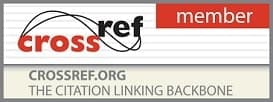Vol. 8, Issue 1, Part A (2025)
Histopathological study of lesions of nasal cavity and paranasal sinuses in a tertiary care centre
Surbhi Ganeshbhai Patel, Ina Shah, Patel Urvashi Maheshbhai, Riya Nilesh Panjvani, Hadavani Dipalben Kantibhai and Hansa Goswami
Background: The present study was carried out for histopathological assessment of lesions of nasal cavity and Paranasal sinuses. Masses in nasal cavity form a heterogeneous group of lesions with a broad spectrum of histopathological features. Majority of the lesions at these sites is polypoid with less comman presentation being nodules, discharge or ulceration. Histopathological examination helps to assess the lesions and provide a clear understanding of their histopathological features, ultimately guiding management of patient.
Methods; A retrospective study of 150 biopsy specimens of nasal cavity and paranasal sinuses were studied. A detailed history of patients was taken with particular emphasis on demographic characteristics such as age, sex, clinical feature, other radiological investigation as well as macroscopic features of the tissue specimens. For histopathological examination specimen were fixed in 10% buffered formalin and then tissue was processed with automated tissue processor, sectioned and stained with Haematoxylin and Eosin stain, dried and mounted in DPX and Microscopic examination was done.
Result: In the present study of 150 cases, the majority 119 cases (79.3%) were diagnosed as non-neoplastic lesions, including 39 of fungal origin, 35 inflammatory polyps, 27 chronic non-specific inflammatory lesions, 14 acute inflammatory lesions, and a cases of Rhinosporidiosis, Epidermal inclusion cyst, Nasolabial cyst, and Mucocele. 31 cases (20.7%) were diagnosed as neoplastic lesions, consisting of 19 benign tumors and 12 malignant tumors. Among the malignant tumors, Squamous cell carcinoma was the most common, followed by adenocarcinoma. These study shows that, many different types of lesions can occur in the nasal cavity and paranasal sinuses, emphasizing the importance of accurate histopathological diagnosis for effective management.
Conclusion: The age group in this study ranged from 7 to 80 years. Inflammatory and tumor like lesions were seen in all age groups, while benign tumors showed a peak incidence in the 2nd and 3rd decade and malignant tumors were common in the 5th to 7h decade. Males were more commonly affected as compared to females. Inflammatory and tumor like lesions were the most common lesions occurring at these sites, followed by malignant tumors and benign tumors respectively.
Pages: 13-16 | 1535 Views 395 Downloads






